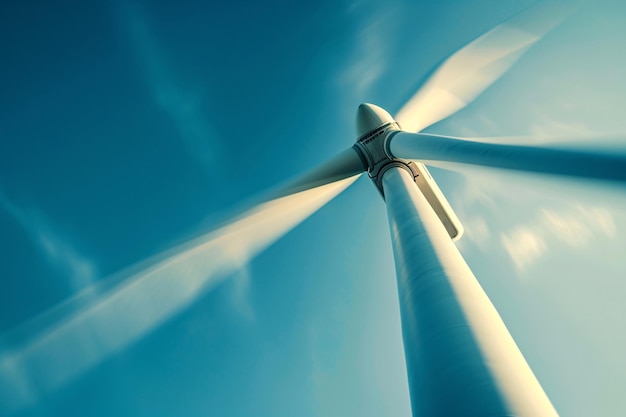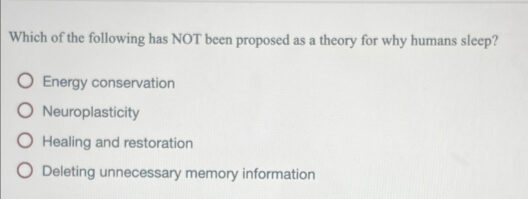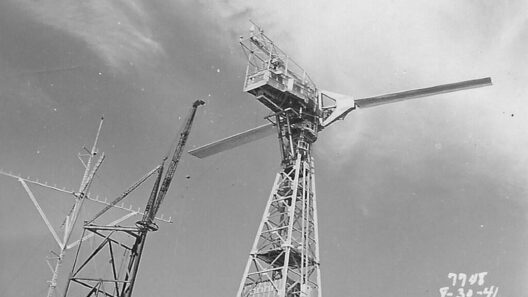Is Wind Energy Renewable? Understanding Why Wind Power is a Sustainable and Renewable Energy Source
The advent of modern technology has reshaped our understanding of energy sources and their sustainability. Among these sources, wind energy stands out, presenting a thrilling conundrum: is it really renewable or merely a fleeting solution in the grand tapestry of energy production? This inquiry invites an exploration into the inherent attributes of wind energy, its viability, and the obstacles it faces in the quest for a sustainable future.
To unravel the fabric of wind energy, it is essential to first define what truly constitutes a renewable energy source. Generally, renewable energy refers to energy harnessed from resources that naturally replenish themselves. This includes sunlight, water, and, indeed, wind. However, can we delve deeper into wind energy’s sustainable credentials? Let’s navigate this intriguing landscape.
Understanding Wind Energy as a Renewable Resource
Wind energy is generated through wind turbines that convert the kinetic energy of wind into electrical power. The very essence of wind is rooted in natural processes—specifically, the uneven heating of the earth’s surface by the sun, causing air to move. This movement is cyclical and dependent on climatic conditions, which raises a pertinent question: can we rely on it indefinitely? The answer lies in examining various factors, including availability, environmental impact, and technological advancement.
The naturally occurring cycles that govern wind patterns assure us that wind will remain a staple in the Earth’s energy repertoire. Unlike fossil fuels, which are finite and contribute significantly to greenhouse gas emissions, wind energy offers a cleanness that is becoming increasingly vital in the face of climate change. The inexhaustible nature of wind propels it into the renewable category, making it an advantageous choice for sustainable energy development.
Wind Energy’s Role in the Global Energy Landscape
The role of wind energy is not merely one of replacing fossil fuels; it is also crucial in diversifying the energy portfolio. By integrating wind power, countries are better equipped to combat the fluctuations of energy supply and price instability associated with traditional energy sources. Wind energy can be harnessed on both large scales—through wind farms—and smaller scales, like residential turbines, contributing to localized energy independence.
However, a playful challenge arises: while wind power is heralded for its benefits, can it truly satisfy global energy demands alone? Few would argue that wind energy can singlehandedly carry the entire weight of energy provision. Yet, as part of a broader mix of renewable technologies, it plays a significant and supportive role in achieving energy security.
Technological Advancements in Wind Power
In recent years, technological advancements have propelled the efficiency and effectiveness of wind energy. Turbines are no longer the rudimentary structures of yesteryear; contemporary designs focus on maximizing energy capture while minimizing environmental disruption. Innovations such as vertical-axis turbines and turbine sensitivity modifications allow for greater adaptability to variable wind conditions.
Yet, as advancements surge forward, the question of land use and ecological footprints comes to the fore. Wind farms, while harnessing nature’s gifts, can disrupt local ecosystems and wildlife patterns. Striking a balance between energy production and ecological preservation remains a challenge that researchers and policymakers fervently grapple with. This dilemma invites an essential dialogue: how can we harness the wind while respecting the intricate dance of nature?
The Environmental Impact of Wind Energy
On the surface, wind energy presents an environmentally benign profile: it reduces dependence on carbon-heavy fuels and contributes towards lowering greenhouse gas emissions. Wind farms, in fact, have been shown to save millions of tons of CO2 emissions annually. However, a comprehensive evaluation reveals complexities that demand attention.
The construction and operation of wind turbines can have localized adverse effects, including noise pollution and impacts on wildlife, particularly birds and bats. Furthermore, the footprint of manufacturing turbines—comprising materials such as steel and rare earth elements—can also impose significant environmental costs. Addressing these challenges requires innovative solutions and continued research to mitigate adverse impacts while leveraging the benefits of wind energy.
Creating a Sustainable Wind Energy Future
The transition to a sustainable future rests on the shoulders of holistic energy strategies that embrace wind power as a central pillar. Policy frameworks need to incentivize the integration of renewable energies into the grid, ensuring that investment flows into new technologies that can lessen environmental impact. Moreover, expanding public awareness about the benefits and challenges associated with wind energy promotes informed decision-making in communities across the globe.
Although wind energy is a quintessential renewable energy source, its path forward isn’t without obstacles. Tasked with addressing economic, environmental, and social challenges, stakeholders from government agencies to community members play critical roles in shaping our energy landscape. Optimism blended with realistic assessments will cultivate a robust framework for harnessing wind’s potential.
In conclusion, the inquiry into whether wind energy is renewable unearths profound insights into our energy future. As advancements continue and dialogues progress, wind energy remains a formidable candidate for leading us toward a sustainable and resilient energy system. The question is no longer merely about whether wind can sustain us; it is about how collectively we can ensure that it does so responsibly and effectively.






